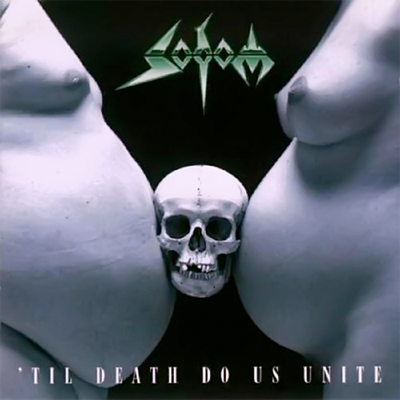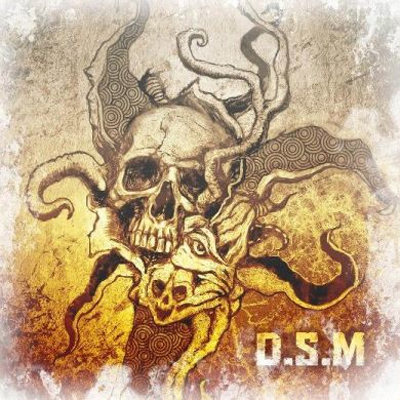
SODOM, ‘Til Death Do Us Unite (1997, Sony GmbH)
The skull:
The ridiculousness of this cover edges into the sublime. Assuming the (corny, unclever) title came first, it’s hard to imagine art that could do more to turn it into an almost meaningful phrase, elevate it beyond a half-hearted pun, than this cover does. Yes, it’s fairly absurd, but it must be admitted that part of the reaction to this image is bound up in a societal discomfort with a presentation of nudity that is neither lascivious nor humorous in intent. Something similar can be said about obesity, for while this photograph is not entirely unjudgmental in its view of the man on the left, contrast the sobriety of this picture with the cover of the album two back in the Sodom discography, Get What You Deserve. The symmetry between the two subjects here implicitly dignifies (to some extent) the man, presenting him at the very least without scorn. Forgive this friar for waxing pretentious, though. This is a funny site about skulls (and look at that happy fella, sandwiched between those two big bellies). I know, though, that this cover has come in for a lot of derision over the years, but I do find it incredibly striking and poetic in a way almost completely unknown to heavy metal art. Of course I recognize the silliness at work here, but this is not a joke without value or meaning, and I think to this day that it was a bold and brave decision on the band’s part to use this cover.
The music:
Perhaps the biggest surprise with this album is not the cover per se, but that they chose to so adorn an album that was an obvious effort of rebirth (hence the irony of the title). After sliding in the post-Blackfire years into a kind of crusty, mangy punk metal, this album debuts a new lineup and a (partial) return to the crisp thrash of their late 80s heyday. The easy thing to do would have been to commission a fresh painting of Knarrenheinz (their gas-masked mascot) from Andreas Marschall to announce this stylistic backpedal (see: Kreator’s Violent Revolution), and in fact the “censored” cover art is a very shitty painting in this vein, but by using this photographic cover as they did, Sodom could effectively say, “Yes, we’re playing thrash again, but we’ll still do what we want,” and indeed they do, as this album doesn’t shed, entirely, the punky leanings of the several albums before. That they needed a change was obvious from the moribund Masquerade in Blood, but I happened to like Get What You Deserve a lot, even if the larger metal community did not. Till Death Do Us Unite is in that way a good have-their-cake-and-eat-it-too compromise, and it set the stage for the band’s 00s renaissance, culminating with their self-titled 2006 release. (Their newest album, their best since Better Off Dead, is to me the beginning of a fourth era in the Sodom legacy.) While Destruction and Kreator both managed to accrue some progressive cred in the late 80s, Sodom were always the workhorse of the Teutonic three, but this album demonstrated that to underestimate the band’s wit and vision is a mistake.
— Friar Johnsen
